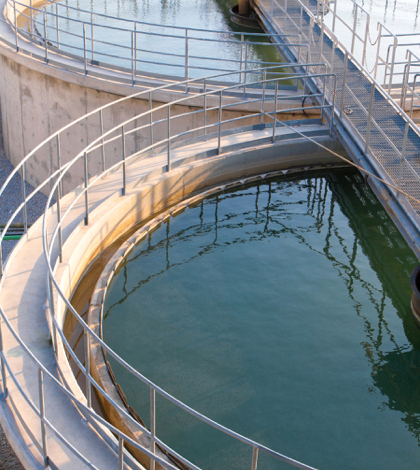A new 10,000-square-foot sewage sludge processing facility open earlier this week in Palo Alto to accommodate all the equipment and controls necessary to dewater and process the sludge which will dramatically reduce greenhouse gas emissions, eliminate a hazardous waste stream and reduce the city’s energy costs. The new site will also include a truck loading facility, miscellaneous support areas, and an odor control system.
The $30 million sewage sludge processing facility was funded in large part by the State Water Resources Control Board’s Clean Water State Revolving Fund. The city received approximately $26 million in low-interest loan funds and $4 million in principal forgiveness funds because the project met the Green Project Reserve requirements of the U.S. Environmental Protection Agency. The loan will be repaid by RWQCP’s partner agencies over 30 years.
“As California adapts to our changing climate, we need more green projects like the City of Palo Alto’s that provide multiple benefits like reducing greenhouse gas emissions and energy use while making available a useful biosolids soil product,” said State Water Resources Control Board Member Sean Maguire.
The Sludge Dewatering and Loadout Facility, part of Palo Alto’s Regional Water Quality Control Plant (RWQCP), replaces an incinerator that has been in operation since 1972. The project allows Palo Alto to shut down the antiquated, energy-intensive incinerator. This will also eliminate 700 tons per year of incinerator ash, a hazardous waste, and will provide a significant reduction in energy use.
“Eliminating incineration is another step towards Palo Alto’s goal of reducing greenhouse gasses by 80 percent by 2030,” said Phil Bobel, Public Works Department assistant director. “The process also eliminates 700 tons of incinerator ash; a hazardous waste. This is an 85 percent reduction of hazardous waste from city-owned facilities.”
The new sludge dewatering process will reduce climate-warming greenhouse gas emissions by some 15,000 metric tons of carbon dioxide per year or the equivalent of removing 3,000 passenger cars. The dewatered sludge will ultimately be converted for use in farming areas as agricultural soil supplements.
Construction on the project began in March 2017. The city held a ribbon cutting ceremony to celebrate the recently-completed Sludge Dewatering and Truck Loadout Facility on June 5. As part of the ceremony, Mayor Eric Filseth permanently turned off the sewage sludge incinerators.
 California Water News Daily Your Source For Water News in California
California Water News Daily Your Source For Water News in California


